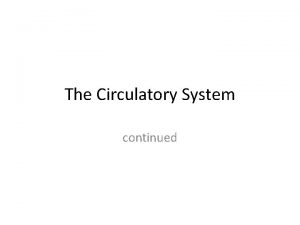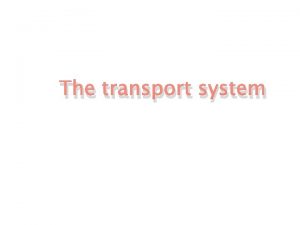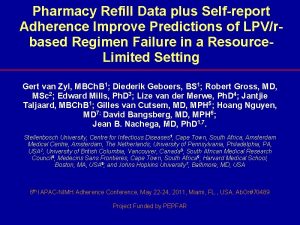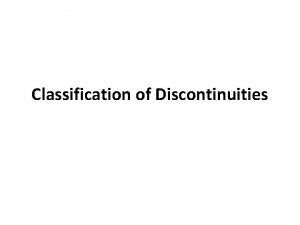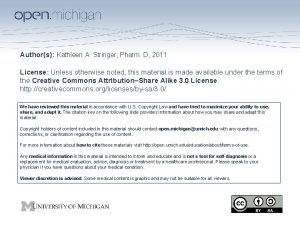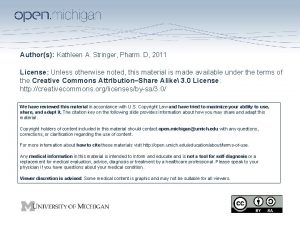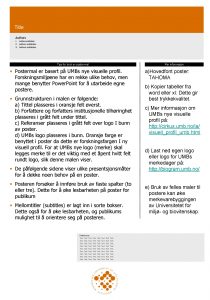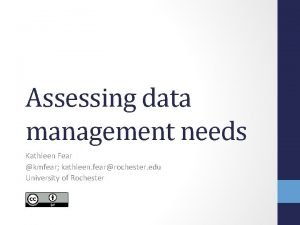Authors Kathleen A Stringer Pharm D 2011 License

































- Slides: 33

Author(s): Kathleen A. Stringer, Pharm. D, 2011 License: Unless otherwise noted, this material is made available under the terms of the Creative Commons Attribution–Share Alike 3. 0 License: http: //creativecommons. org/licenses/by-sa/3. 0/ We have reviewed this material in accordance with U. S. Copyright Law and have tried to maximize your ability to use, share, and adapt it. The citation key on the following slide provides information about how you may share and adapt this material. Copyright holders of content included in this material should contact open. michigan@umich. edu with any questions, corrections, or clarification regarding the use of content. For more information about how to cite these materials visit http: //open. umich. edu/education/about/terms-of-use. Any medical information in this material is intended to inform and educate and is not a tool for self-diagnosis or a replacement for medical evaluation, advice, diagnosis or treatment by a healthcare professional. Please speak to your physician if you have questions about your medical condition. Viewer discretion is advised: Some medical content is graphic and may not be suitable for all viewers.

Citation Key for more information see: http: //open. umich. edu/wiki/Citation. Policy Use + Share + Adapt { Content the copyright holder, author, or law permits you to use, share and adapt. } Public Domain – Government: Works that are produced by the U. S. Government. (17 USC § 105) Public Domain – Expired: Works that are no longer protected due to an expired copyright term. Public Domain – Self Dedicated: Works that a copyright holder has dedicated to the public domain. Creative Commons – Zero Waiver Creative Commons – Attribution License Creative Commons – Attribution Share Alike License Creative Commons – Attribution Noncommercial Share Alike License GNU – Free Documentation License Make Your Own Assessment { Content Open. Michigan believes can be used, shared, and adapted because it is ineligible for copyright. } Public Domain – Ineligible: Works that are ineligible for copyright protection in the U. S. (17 USC § 102(b)) *laws in your jurisdiction may differ { Content Open. Michigan has used under a Fair Use determination. } Fair Use: Use of works that is determined to be Fair consistent with the U. S. Copyright Act. (17 USC § 107) *laws in your jurisdiction may differ Our determination DOES NOT mean that all uses of this 3 rd-party content are Fair Uses and we DO NOT guarantee that your use of the content is Fair. To use this content you should do your own independent analysis to determine whether or not your use will be Fair.

Pharmacy 476 Selecting a Study Design Kathleen A. Stringer, Pharm. D Associate Professor Department of Clinical, Social and Administrative Sciences College of Pharmacy University of Michigan

Objectives • Discuss the process of selecting a study design • Address project-specific questions about study design

Study Designs

Most Common Study Designs • Three different perspectives to consider: – number of contacts with the study population Number of Contacts with the – duration of study or the length of the study period. Study Population – the type of investigation Kumar, R. Chapter 8: Selecting a Study Design. In: Research Methodology, 2 nd Edition.

Study Design Based on the Number of Contacts • Study design based on the number of contacts falls into one of three groups: – cross-sectional – before-and-after – longitudinal Kumar, R. Chapter 8: Selecting a Study Design. In: Research Methodology, 2 nd Edition.

Study Design Cross-sectional Study Design • Takes a “snap-shot” in time – takes a “cross-section” of a population – can be prospective or retrospective • Best suited for: – finding out the prevalence of a disease or phenomenon • Is simple in design – identify the study population – select a sample – acquire data Kumar, R. Chapter 8: Selecting a Study Design. In: Research Methodology, 2 nd Edition.

Cross-sectional Study Design • Examples – the attitude of the elderly towards pharmacists – the socioeconomic-demographic characteristics of teenagers with STDs – the relationship between the home environment and the incidence of asthma in children • These studies involve only one contact with the study population Kumar, R. Chapter 8: Selecting a Study Design. In: Research Methodology, 2 nd Edition.

Study Design Before-and-After Study Design • Measures change – It’s the most appropriate design for measuring the impact or effectiveness of an intervention or program: • can be two-cross sectional studies • can be prospective or retrospective • “impact” or “effect” on a study population Kumar, R. Chapter 8: Selecting a Study Design. In: Research Methodology, 2 nd Edition.

Before-and-After Study Design • Examples – The impact of specialty board certification on the quality of pharmacy services – The effectiveness of pharmacy-based management of hypertension – The impact of an antibiotic restriction program on hospital drug costs Kumar, R. Chapter 8: Selecting a Study Design. In: Research Methodology, 2 nd Edition.

Before-and-After Study Design • Advantages – measures change and/or impact/effectiveness • Disadvantages (depends on type of study) – requires the collection of two (rather than one) data sets from the same study population – time between measures may result in attrition of study population or can skew its demographics (e. g. , pediatrics) – measures total change- you can’t ascertain whether other variables contribute to the change in your measure – “intervention” may condition study population – study population attitudes can be influenced over time Kumar, R. Chapter 8: Selecting a Study Design. In: Research Methodology, 2 nd Edition.

Study Design Longitudinal Study Design • Used to study patterns of change over time – to study the proportion of people adopting a program in relation to time – you can collect data on a continuing basis and measure trends • Study population is sampled numerous times – a series of repetitive cross-sectional studies Kumar, R. Chapter 8: Selecting a Study Design. In: Research Methodology, 2 nd Edition.

Longitudinal Study Design • Advantages – allows for the measure of changes in patterns over time on a regular or continuous basis • effect of propranolol on blood pressure using a continuous blood pressure monitoring device • Disadvantages – conditioning effect Kumar, R. Chapter 8: Selecting a Study Design. In: Research Methodology, 2 nd Edition.

Most Common Study Designs • Three different perspectives to consider: – number of contacts with the study population Duration of the Study – duration of study or study period – the type of investigation Kumar, R. Chapter 8: Selecting a Study Design. In: Research Methodology, 2 nd Edition.

Study Design Based on Study Length • Study design based on the duration of the study or the length of the study period falls into one of three groups: – retrospective – prospective – retrospective-prospective Kumar, R. Chapter 8: Selecting a Study Design. In: Research Methodology, 2 nd Edition.

Study Design Retrospective • Retrospective studies investigate a phenomenon or problem that has happened in the past – fact-finding, preliminary, hypothesisgenerating – important event that occurred in the past Kumar, R. Chapter 8: Selecting a Study Design. In: Research Methodology, 2 nd Edition.

Study Design Prospective • Prospective studies refer to the future – to determine the impact or an effect of an intervention on a future event Kumar, R. Chapter 8: Selecting a Study Design. In: Research Methodology, 2 nd Edition.

Study Design Retrospective-Prospective • These studies use past trends to study future events – measurement of an intervention without having a control group (e. g. , use of historical controls) – before-and-after studies can be retrospectiveprospective • part of the data are collected before an intervention from existing records then the same group is studied following an intervention Kumar, R. Chapter 8: Selecting a Study Design. In: Research Methodology, 2 nd Edition.

Randomization • Experimental studies can be further classified on whether the study population is randomly assigned to different treatment groups – the intent is that potentially confounding variables will be equally distributed between the groups – can be used in any experimental design

Study Design Experimental • before-and-after design Study Population Pre-intervention data collection Kathleen A. Stringer intervention Study Population Post-intervention data collection

Study Design Experimental • Addition of inclusion/exclusion criteria, randomization and control groups Experimental Group General Population Study Population Control Group inclusion/exclusion criteria randomization Kathleen A. Stringer

Study Design Experimental • Can have more than one experimental and/or control groups – may also have more than one treatment or intervention (arms) – this will be dictated by your hypothesis and your specific aims Experimental Group 1 Study Population Experimental Group 2 Control Group Kathleen A. Stringer

Study Design Experimental • Control groups can consist of an active control, a placebo control or both Experimental Group Study Population Control Group Placebo Group Kathleen A. Stringer

Study Design Experimental • Other designs – Cross-over Group A Group B control treatment Group B active treatment Group A “wash-out” Time Kathleen A. Stringer

Study Design • Case control study- characteristics of patients with a condition are compared with those without. What’s the cause? • Cohort study- group of patients with a specific disease or characteristic are followed over a period of time to detect complications or new events. Can be retrospective or prospective. • Cross-sectional- presence or absence of exposure to possible risk factor measured at one point in time. Obtains prevalence.

Study Design • Blinding – limits bias in the conduct of research and the interpretation of data – bias influences recruitment, enrollment, group allocation, decision-making, data analysis and assessment – Types: double-blind, single-blind • Unblinded or open label Poolski, "Blindfold", flickr, http: //www. flickr. com/photos/poolski/2898422 596/, CC BY-SA 2. 0, http: //creativecommons. org/licenses/bysa/2. 0/deed. en.

Study Design The Devil’s in the Details • Identify the study design you will use to test your hypothesis and achieve your aims • Expand to include more details – inclusion/exclusion criteria (avoid redundancy) – treatment regimens or interventions • what exactly are you going to test?

Study Design • Define your patient population – who (gender, age, ethnicity etc) – disease state (specific criteria) – setting (inpatient, outpatient) • These parameters are what you’ll use to define your inclusion/exclusion criteria • You need to provide enough detail so your reviewer knows what you plan to do

Study Design • Method details – describe drug regimen (if applicable) • what? • how much (and frequency)? • how long? – treatment arms – specifics of intervention

Measurements • On Monday we’ll talk about outcomes, variables and measurements – these are also aspects of your study design • Individual assignment #2 – due TOMORROW via Ctools assignments

University of Michigan

Additional Source Information for more information see: http: //open. umich. edu/wiki/Citation. Policy Slide 6: Kumar, R. Chapter 8: Selecting a Study Design. In: Research Methodology, 2 nd Edition. Slide 7: Kumar, R. Chapter 8: Selecting a Study Design. In: Research Methodology, 2 nd Edition. Slide 8: Kumar, R. Chapter 8: Selecting a Study Design. In: Research Methodology, 2 nd Edition. Slide 9: Kumar, R. Chapter 8: Selecting a Study Design. In: Research Methodology, 2 nd Edition. Slide 10: Kumar, R. Chapter 8: Selecting a Study Design. In: Research Methodology, 2 nd Edition. Slide 11: Kumar, R. Chapter 8: Selecting a Study Design. In: Research Methodology, 2 nd Edition. Slide 12: Kumar, R. Chapter 8: Selecting a Study Design. In: Research Methodology, 2 nd Edition. Slide 13: Kumar, R. Chapter 8: Selecting a Study Design. In: Research Methodology, 2 nd Edition. Slide 14: Kumar, R. Chapter 8: Selecting a Study Design. In: Research Methodology, 2 nd Edition. Slide 15: Kumar, R. Chapter 8: Selecting a Study Design. In: Research Methodology, 2 nd Edition. Slide 16: Kumar, R. Chapter 8: Selecting a Study Design. In: Research Methodology, 2 nd Edition. Slide 17: Kumar, R. Chapter 8: Selecting a Study Design. In: Research Methodology, 2 nd Edition. Slide 18: Kumar, R. Chapter 8: Selecting a Study Design. In: Research Methodology, 2 nd Edition. Slide 19: Kumar, R. Chapter 8: Selecting a Study Design. In: Research Methodology, 2 nd Edition. Slide 21: Kathleen A. Stringer Slide 22: Kathleen A. Stringer Slide 23: Kathleen A. Stringer Slide 24: Kathleen A. Stringer Slide 25: Kathleen A. Stringer Slide 27: Poolski, "Blindfold", flickr, http: //www. flickr. com/photos/poolski/2898422596/, CC BY-SA 2. 0, http: //creativecommons. org/licenses/bysa/2. 0/deed. en. Slide 32: University of Michigan, http: //www. umich. edu/
 Pharm406
Pharm406 Secur pharm
Secur pharm Library.med.utah.edu/kw/pharm/hyper heart.html
Library.med.utah.edu/kw/pharm/hyper heart.html Klucel exf
Klucel exf Bc bio-pharm
Bc bio-pharm Purdue retail pharmacy
Purdue retail pharmacy Outfield pharm
Outfield pharm Solid blender
Solid blender Pharm link
Pharm link Pharma degree
Pharma degree Pharm d means
Pharm d means Peptide api manufacturers
Peptide api manufacturers Pharm id
Pharm id Pharm gkb
Pharm gkb Library.med.utah.edu/kw/pharm/hyper heart.html
Library.med.utah.edu/kw/pharm/hyper heart.html Pharm
Pharm Sharon stringer
Sharon stringer Stick welding weave bead
Stick welding weave bead Slg dorothy stringer
Slg dorothy stringer Mark stringer missouri
Mark stringer missouri Primary processing discontinuities
Primary processing discontinuities Dorothy stringer term dates
Dorothy stringer term dates Ladislo biro
Ladislo biro Barbara stringer
Barbara stringer Staircase calculation formula pdf
Staircase calculation formula pdf Primary role of longitudinal members of the ship.
Primary role of longitudinal members of the ship. Cuestionario litwin y stringer
Cuestionario litwin y stringer Gordon stringer
Gordon stringer Randa stringer
Randa stringer Kathleen sikkema
Kathleen sikkema Kathleen mercury
Kathleen mercury Activity insight psu
Activity insight psu Kathleen hill uwo
Kathleen hill uwo Kathleen kelly character
Kathleen kelly character


